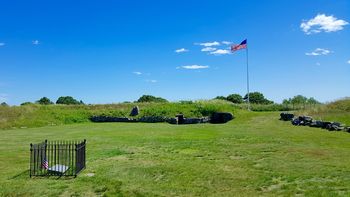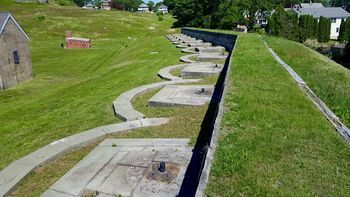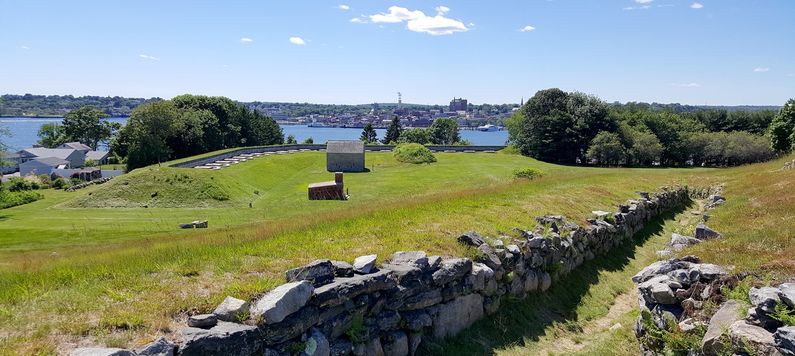Fort Griswold
| More information at Warlike, Wikidata, Wikipedia
Fort Griswold (1775-1903) - An Revolutionary War Coastal Fort first established in 1775 in New London County, Connecticut. Named after then Connecticut Lt. Governor Matthew Griswold. Turned over to the State of Connecticut in 1903. Also known as Fort Groton. Revolutionary War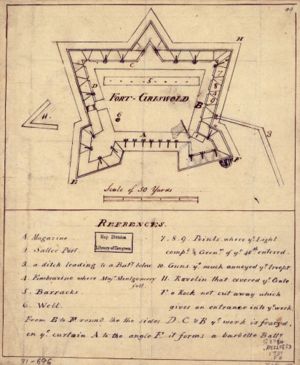 Built between 5 Dec 1775 and 1778 as a stone structure with 12' high walls with bastions at opposite corners surrounded by a ditch. The south side exit/entrance led to a rock lined covered way that provided protected access to a large lower battery. The main entrance on the north side was protected with an exterior ravelin. The garrison flag pole was situated in the southwest bastion. On the east side of the parade was a long barracks that ran north and south. The fort had embrasures for some 30 cannons and a stone magazine built into the southwest bastion. The fort was attacked and captured in September 1781 by a British force led by the traitor Benedict Arnold. The fighting was severe and the British lost two senior officers during several attempts to breech the walls. When the British finally penetrated the defenses through the embrasures on the south side, the garrison commander, Colonel William Ledyard, surrendered and presented his sword to the British officer in charge whereupon that officer killed Colonel Ledyard with his own sword. The British troops then massacred 84 of the remaining American troops, left 40 more seriously wounded and marched the remainder of the Americans off as prisoners. The towns of New London and Groton were burned down as Benedict Arnold spread devastation through the countryside.
War of 1812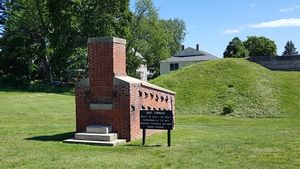 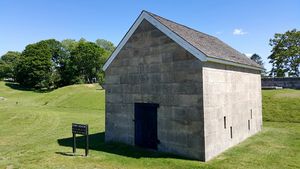 Fort Griswold was lightly garrisoned during the War of 1812 and suffered no attacks. The British fleet kept New London and Groton sealed off from the sea with a blockade but never landed troops. By 1818 this was a 12-gun fort. In 1843 a large stone magazine and a hot shot furnace were added to the lower battery.
U.S. Civil War The fort was upgraded during the U.S. Civil War and larger cannons emplaced.
Endicott PeriodPart of the Harbor Defense of Long Island Sound. By 1903 the fort was no longer garrisoned and in poor condition. The post was in the charge of the Commanding Officer of Fort Trumbull and had mounted four 8" smooth bore Rodman guns and one 14 cm breech loading rifle. Unmounted guns included two 15" smoothbore guns, four 32 pounders smoothbore guns and one 24 pounder rifled gun. On 17 Nov 1903, under act of congress 6 Jun 1902 the post was transferred to the Fort Griswold Tract Commission of the State of Connecticut Current Status Must See! A fine example of a Revolutionary War era fort, well preserved and well interpreted. Part of Fort Griswold State Park, Groton, New London County, Connecticut. A memorial plaque at the site lists all the 1781 battle defenders and a tower monument commemorates the massacre. Stone monuments mark the places where Patriot Colonel William Ledyard and British Major William Montgomery fell during the 1781 battle.
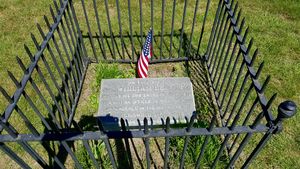 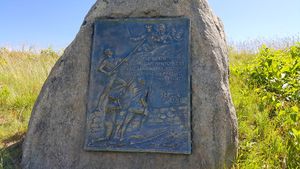
Sources:
Links: Visited: 10 Jun 2016
|
